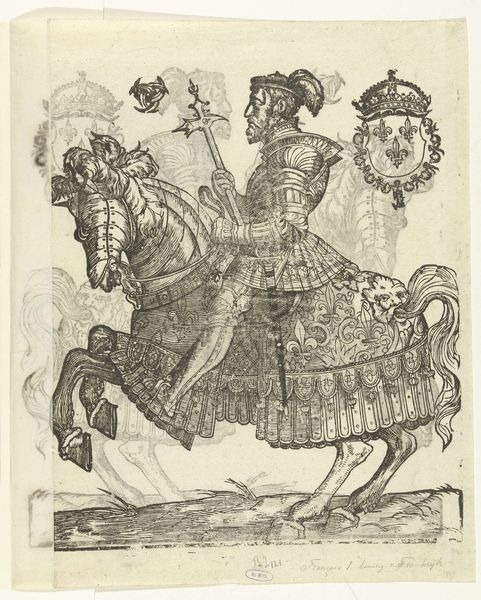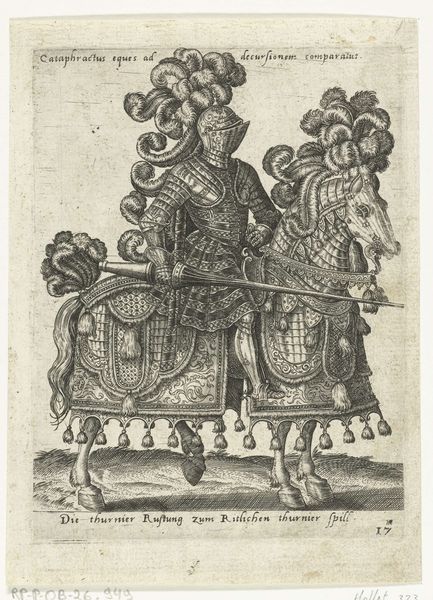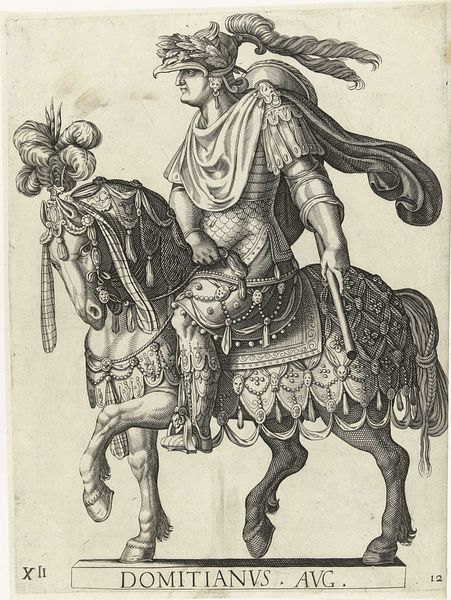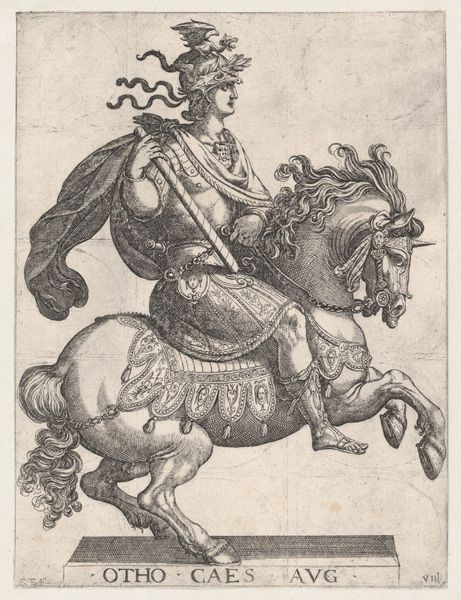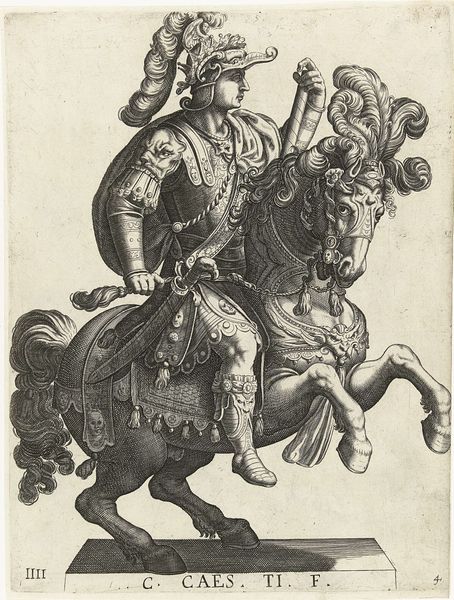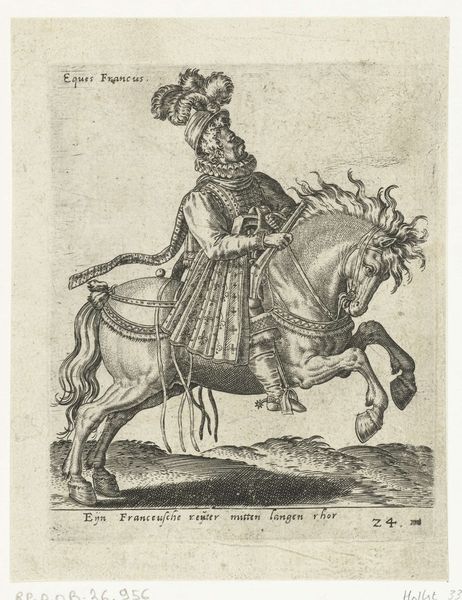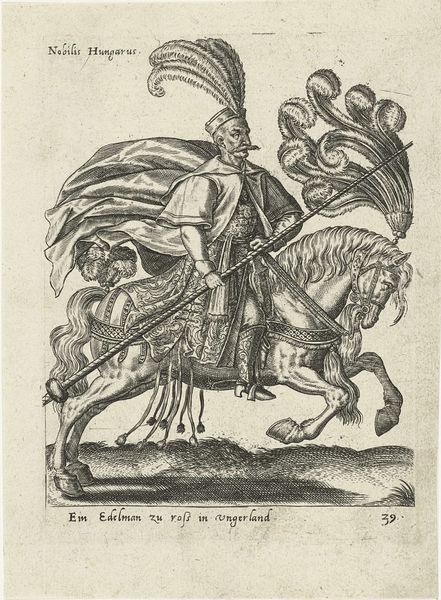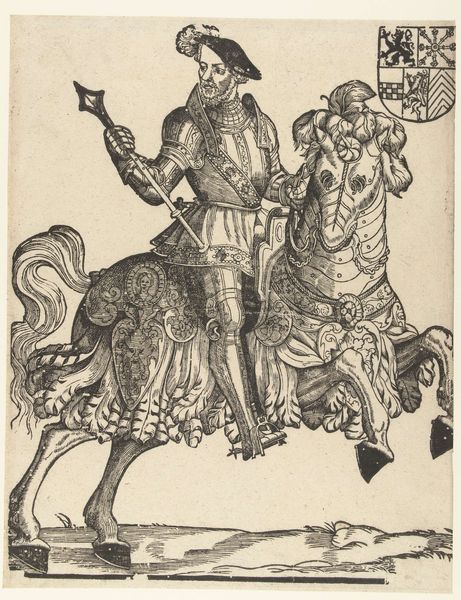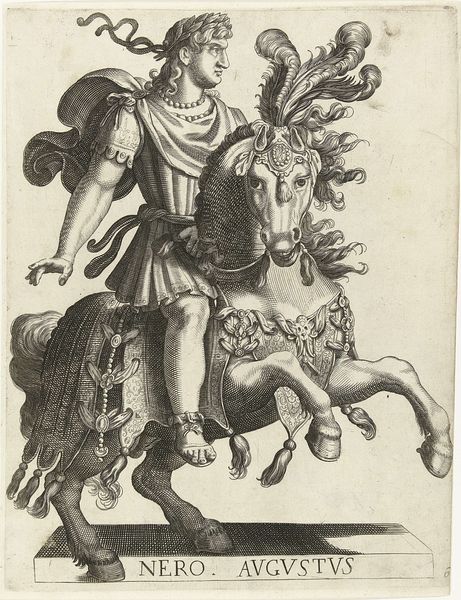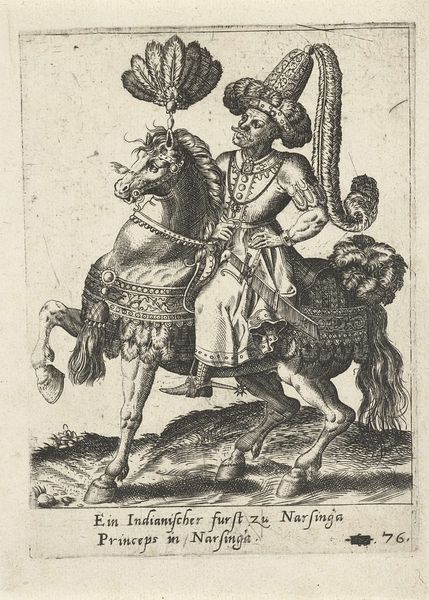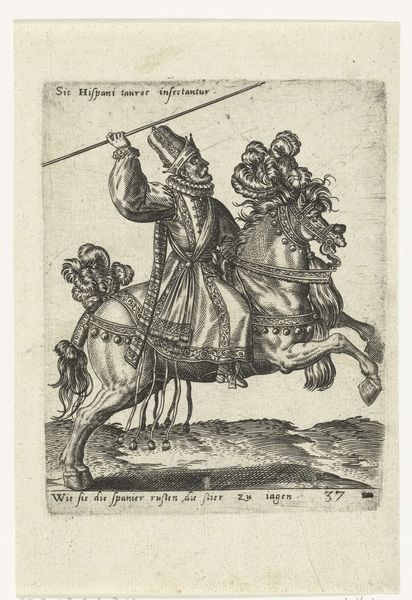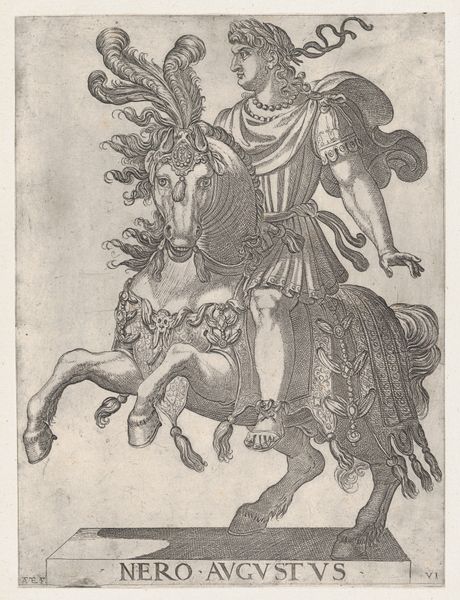
Portret van Hendrik II van Frankrijk te paard Possibly 1538 - 1900
0:00
0:00
drawing, print, metal, engraving
#
portrait
#
drawing
# print
#
metal
#
history-painting
#
engraving
Dimensions: height 385 mm, width 295 mm
Copyright: Rijks Museum: Open Domain
Curator: This image arrests my attention with its commanding central figure. The linear details of this engraving on metal, by Cornelis Anthonisz, depict "Portret van Hendrik II van Frankrijk te paard"—a portrait of King Henry II of France on horseback, held here at the Rijksmuseum. The creation date ranges from around 1538 up to 1900, showing some uncertain timeline of creation and printing process of such material. Editor: My first thought is of process – the labor invested! The detail of the armor, the horse’s elaborate trappings – it’s so precisely rendered. What were the conditions for printmakers back then? And the phrase at the top "Kermis-Print", suggests mass consumption—were these kinds of portraits widely available? Curator: "Kermis-Print" is intriguing in its suggestion of the image’s social function; yes, these prints allowed for the wide distribution of royal imagery and royal propaganda. And considering the timeframe around its creation, its creation may have initially coincided with Henry’s reign, thus offering a powerful projection of royal power at that specific moment. Editor: Power expressed through materials, too! Look at how the artist uses the relatively new medium of print to create such intricate patterns. Consider the economics; what metals, tools and inks were used? Was labor division influencing the creative choices and ultimate aesthetic? Curator: The history-painting aspect comes forward in the visual vocabulary – notice the fleur-de-lis emblems adorning both the horse’s flanks and coat of arms to the right. Beyond the aesthetics, the availability and the visual presentation became a political performance to enforce royal authority over its constituencies. It highlights how printmaking was evolving to meet these specific political requirements. Editor: It's such an intersection of the social, political, and material; I am always drawn to consider art through those lenses. Curator: Right. The very act of portraying Henry on horseback is deliberate—it reinforces ideas of nobility, and also physical and militaristic dominance. These political motivations of early modern society produced innovative imagery as shown today at the Rijksmuseum. Editor: It's enlightening to see how artistic choices were influenced by access to materials, industrial processes and larger political projects in society. Curator: Yes, an object of both artistry and socio-historical record that expands our perspectives.
Comments
No comments
Be the first to comment and join the conversation on the ultimate creative platform.
